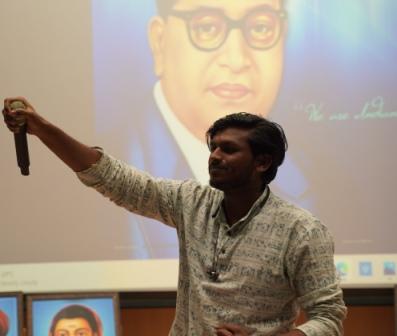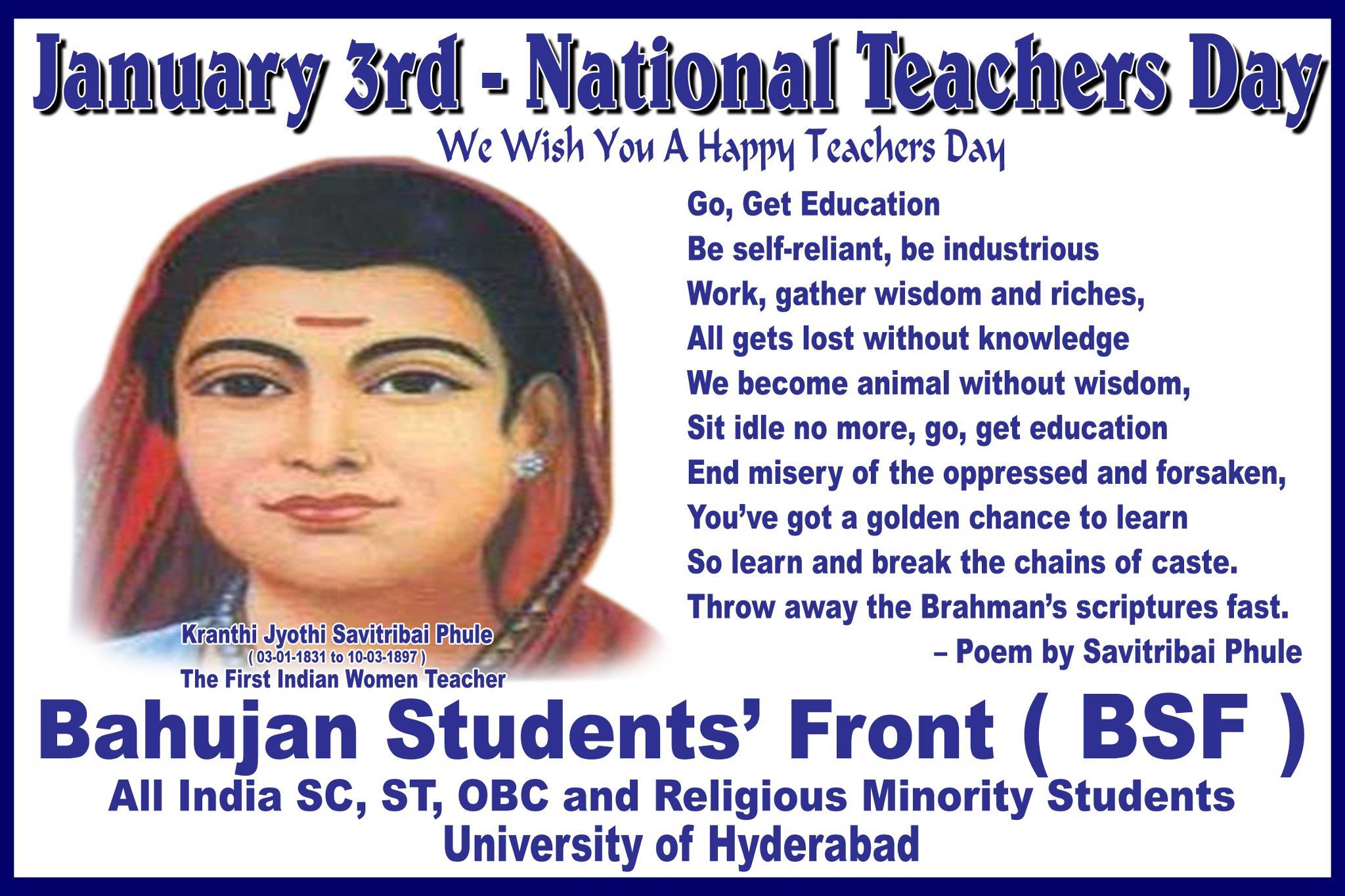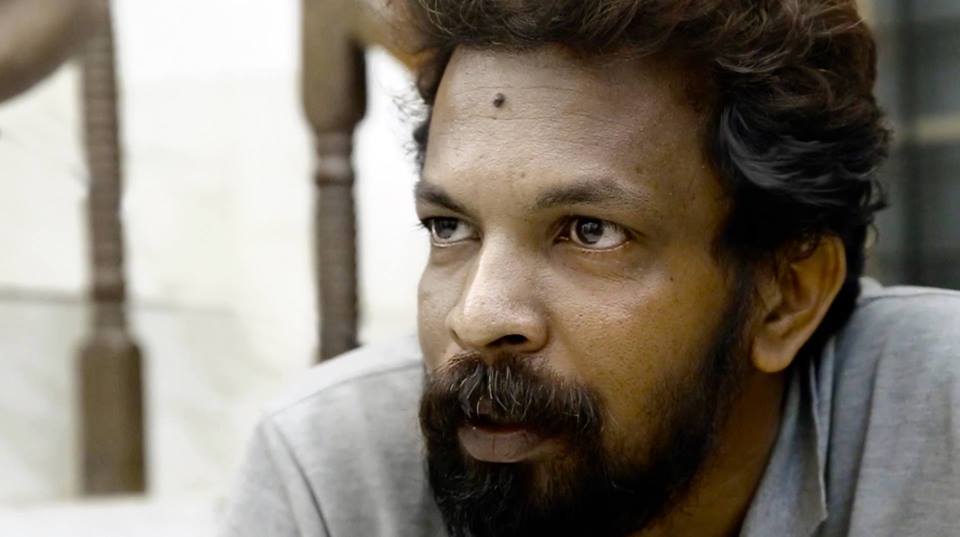Sumit Jambhulkar
“The cultivation of the mind should be the ultimate aim of human existence”, remarked the father of the Constitution of India, Dr. B.R. Ambedkar. The community library can be a place of liberation, where a students come and cultivate his mind as well as enhance his intellectual knowledge and develop his personality. Community libraries play an essential role in the socio-economic development of the people as they help in disseminating information easily within the community.
In a slum area, there is no conducive culture for education and no private space to study well. The most important thing is there is no awareness and no eagerness to take up education. According to one definition, it is a a ‘densely populated urban area, there are improper roads, impure drinking water, sanitation problem, improper infrastructure, electricity, livelihood problem, etc’. Slums have many challenges on a daily basis which limits the development of the community and youth in many ways. There are no separate spaces or study rooms which leads to a lack of a favorable environment for education, higher drop-outs among students in high schools itself, alcohol addiction, domestic violence, early child marriages, inadequate livelihood resources, illiteracy, and much more. Students who lack the motivation to study in schools and colleges engage in informal work like watering in local hotels, catering, or construction etc. There are multiple issues within slums which results in limited development. With no culture for education, those wanting to study have to strive hard for accessing education. In such an unfavorable culture and disadvantaged spaces, community libraries play an important role in creating a counter-culture in slums that supports educational changes. The interesting thing is that, especially in the Northern part of Nagpur, there is a connection between the Buddha Viharas and community libraries. This northern part of Nagpur is known as a slum area.
B. R. Ambedkar founded the Bhartiya Buddha Mahasabha or the Buddhist Society of India, in 1955. Dr. Ambedkar wrote the constitution of Bhartiya Buddha Mahasabha. He mentions that “Buddha Vihara in the next upcoming years should be converted into centers of development.” Buddha Vihara creates an alternative culture for converted Navayana Buddhists. The teachings of Buddha were spread from Buddha Viharas. Buddha Viharas provide spaces with a strong philosophical foundation that makes Navayana Buddhists think rationally about every aspect of life, from one’s suffering leading to the development of consciousness and liberation of the mind. For the independence of the mind, we need the library. The library gives inspiration to many young students and fulfills their dreams.
- The idea of Community Library: The idea of the community library is evolving within the Buddha vihara. There is an interlinkage between Budhha Vihara and the community library. The community libraries I chose were separate spaces and some of them are made above the Buddha Vihara (On the First floor).In ancient times, Samrat Ashok built around 84000 Buddha Viharas all over India. In contemporary times, they made the Vihara a community space because because as B.R. Ambedkar said, the Buddha Vihar is the center of knowledge, not just a place of worship like the Hindu temple. In this Vihara, some of the management team members had visions like creating a community library for our community’s children. They instituted a Buddha Vihar committee to write applications to Members of the Legislative Assembly (MLAs) and approach them to build this community hall. Most of the Buddha Viharas and community halls were built through the MLAs quota. It will take more than two years for approval of these community halls. After a lot of struggle, this building was made without resources. It is used only for cultural programs, marriage celebrations, birthday celebrations, monthly meetings, etc. From these programs whatever funds they collect are used for the development of the Buddha Vihar and the community hall.
- Challenges after making the Community Library: As I was part of that process in our basti, converting the community hall into a community library was not an easy task because we had to fight against the beliefs and perspectives of our people. Some of them had different views on community hall. Then we told them how important the community library is through organizing a program. In that program, we invited chief guests such as a monk and an IPS officer or any reputed personality in the community to constantly convince our people to convert the place into a library. I was very surprised that in order to do good work we had to fight with our own community people. The community hall is for the community not for the only members of the manage team. Sometimes they act like this community hall is the private property of that management team. After a long struggle with the management team, they agreed to convert it into a community library. The struggle did not end here, they were creating obstacles in the path of students like saying, ‘since you are using this place so you have to pay the electricity bill monthly and not use the electronic appliances’. Boys and girls were not allowed in the library after 8 Pm. Girls were not allowed. Initially, the student’s strength was very low but day by day the number increased. After increasing the strength, we needed the other resources (like tables, chairs, and books) for the smooth functioning of the library.
- Creating Counter-Culture: Culture plays an important role in the development of youth and the community. The culture of slums is very different from other societies. They have their own sets of rules, social norms, and cultural practices. Lack of education forces many of them to work in the informal sector.. In the slum area, there is no conducive environment for education. Lack of awareness and opportunities for slums students hampers their vision. Community libraries in the slums are creating an atmosphere of education and to create an opportunity to have a study place for the whole community of students irrespective of caste, creed, religion, gender, etc. Community Libraries are built on the principle that books play an important role in the development of youth and the community. In the above community, the library organized many social activities and cultural programs spreading awareness in the community on how education is important for your development. These kinds of programs help students explore the new world. The programs are organized by the students under the supervision of the seniors. The counter-culture is created through community libraries. Because most of the students do not have a place for study in his\her home. The library is not only a place where you come to study but also to catalyze transformation and exchange of thoughts with each other. These kinds of programs build trust within the community and make them aware of education.
- Youth and community development: The community library creates an atmosphere of education in slums where the word education is alien to them. Most of the students in slums are doing part-time jobs, dropping out from school after class 8 or 9th. The students are helpless due to their poor financial situation: they have to work. They do not have any vision or awareness about their future plans. After 9th or 10th class, they leave their school to work as laborers. “If you want to work after the 12th, why not start working now and earn money”. After Covid-19 everything went digital, so every student uses a smartphone to attend online classes, without any guidance on how to use it for self-development. My observation is that many children use their mobile phones throughout the day to play games and use social media. They forget to play outdoor games. Building the community libraries by organizing many programs and awareness campaigns at the community level for the parents and students changed the scenario of the community. The community library is creating a vibrant atmosphere of education. The students interviewed said, “Baki students ko padhte huye dekhkar hume bhi aage padhai krni hai, isse samaj me vikas hota hai”. We organized many programs for students: awareness camps, workshops, and daily teaching sessions through the community library. For all these activities we used the Budhha Vihar premises with the help of the students. Students’ strength has increased after taking up these initiatives. During the interview, library students said, “Activity participation se hamara baat karne ka confidence badhta hai aur skills develop hote hai”.
- Increase girls’ participation: Initially the girls were not coming to the library due to the management’s narrow-minded thinking and the parents’ reluctance. If a girl talks to a boy, they think she is falling into a relationship. This kind of notion exists in the slums. We are living in a patriarchal society, it is very difficult for girls to study continuously and manage other things. The community library gives the opportunity for girls to study and enhance their personality growth and choose better career options and feel more confident. Most girls in slums do not have good family conditions but they have hope that they will take education seriously so their future will be good. Girl students started getting positive surroundings for studies leading to girls’ inclination toward education. From the interview the girl students said, ” Area main library banane se hame hamari rights ke bare me pata chala aur padhai ka mahol mila”.
The community libraries are significantly contributing to the socio-economic development in our society, especially of those marginalized sections who have been left structurally disadvantaged at the hands of those in power center. The development sector is actively working to harness the potential of youth living in slums but ignoring the role of community libraries. It is high time they adopt this simple but innovative and effective approach in a locality-tailored manner to realize the aspirations of 21st century youth.
Educate, Agitate and Organize!
~~~
Sumit Jambhulkar completed his Masters In Development from Azim Premji University, Bangalore. Batch 2021-2023










